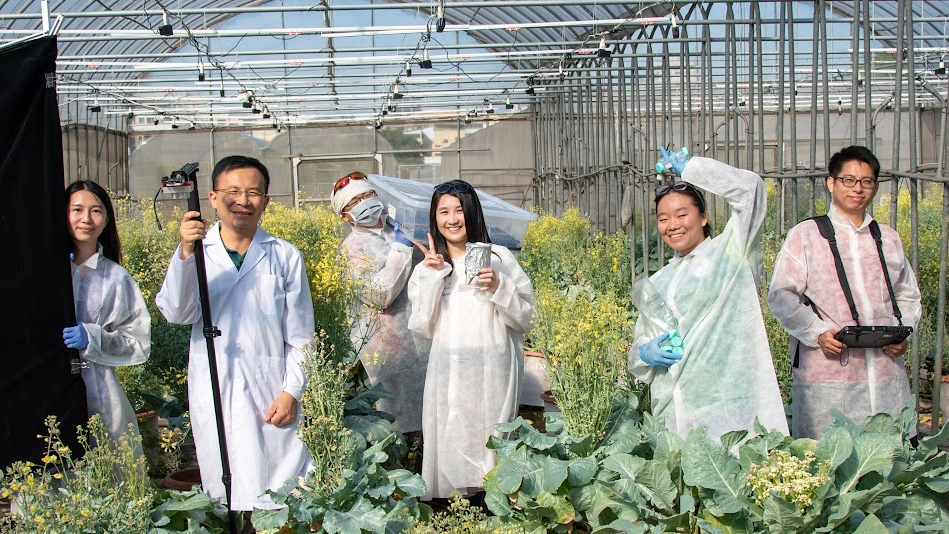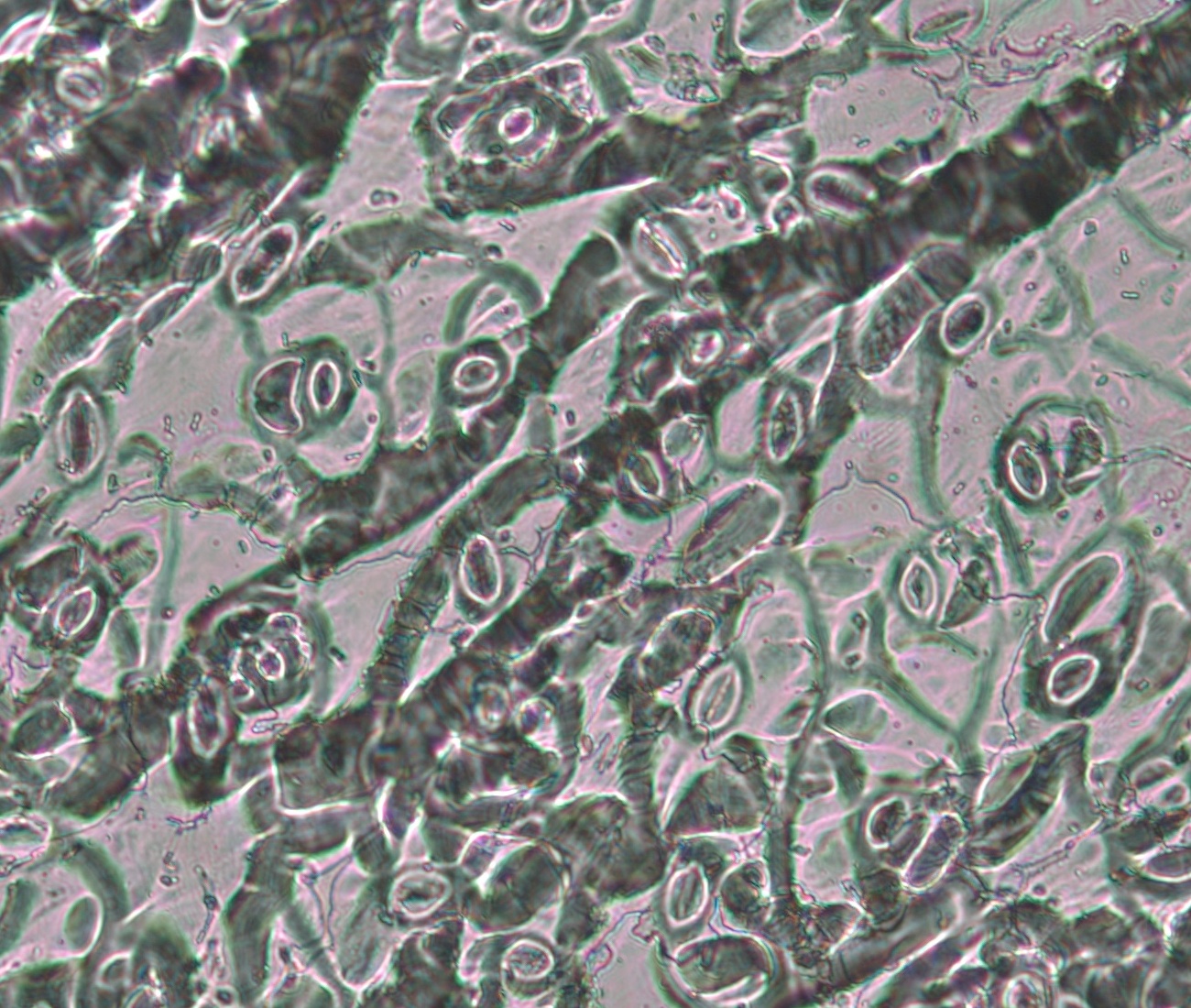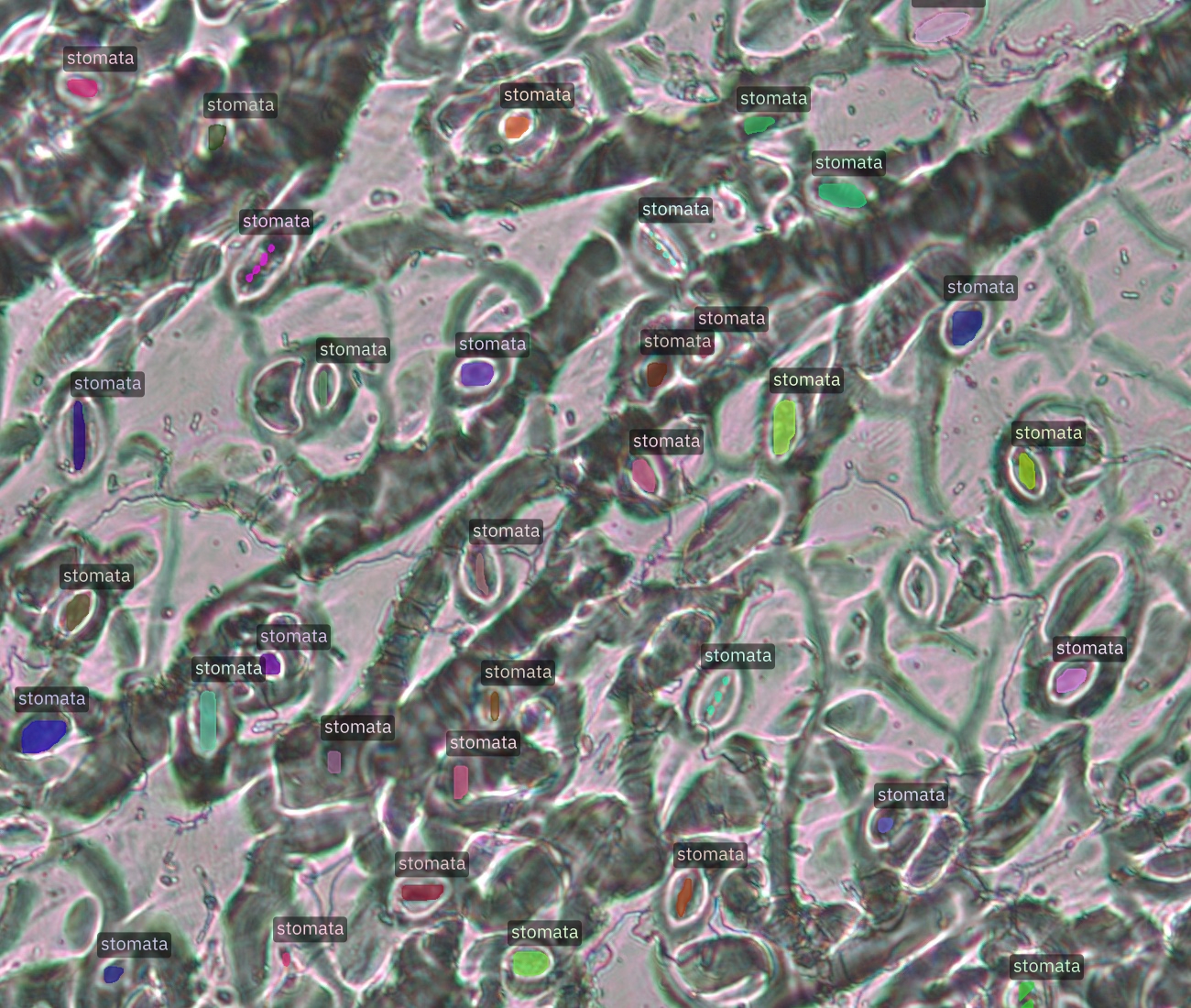Instill Cloud was discontinued in March 2025. However, you can still build and run models and pipelines using Instill Core.
The Bioinformatics and Computational Genomics (BCG) group at Academia Sinica, Taiwan aims to understand the molecular mechanisms and evolutionary forces that shape plant genome diversity and adaptation. They use a combination of high-throughput sequencing, plant phenotyping and computational methods to study critical issues for developing sustainable agriculture and food security.
#Overview
Stomata are microscopic pores on the leaves of plants that control essential processes in plants, including water loss through transpiration and CO2 uptake for photosynthesis. Accurate assessment of plant stomata helps us understand how plants react to environmental challenges. This knowledge is crucial for developing crops that can withstand stress and for promoting sustainable farming methods. Beyond agriculture, understanding of stomata has wide-reaching global consequences, including climate regulation and the management of water resources.
Academia Sinica's BCG lab sought to develop a computer vision solution for analyzing stomata images. Leveraging Instill Cloud, our fully managed cloud-based AI solution stack, they collaborated with our team at Instill AI to create StomaVision, an advanced tool for automated stomatal trait analysis. This collaboration revolutionized their workflow, enabling real-time analysis with unprecedented accuracy.
#Challenge: Overcoming Traditional Analysis Bottlenecks
Traditional methods for stomata analysis involve labour-intensive tasks like microscopy and manual counting, which are not only time-consuming and tedious, but also susceptible to human error and difficult to scale. Meanwhile, current automated solutions often face limitations in adapting to diverse plant species and varying imaging conditions. They struggle to accurately measure essential stomatal characteristics such as aspect ratio, pore size, and dynamic states (open versus closed), limiting our ability to fully understand plant physiology and apply this knowledge broadly in plant research.
#Solution: Pipeline on ☁️ Instill Cloud
We initially selected YOLOv7-seg, an off-the-shelf pre-trained foundation
model for image segmentation. As this model was not initially trained using
stomata image data, we performed supervised fine-tuning to tailor and enhance
it's performance for the specific task of stomata segmentation using 337 data
samples provided by the BCG group. The fine-tuned stomata segmentation model was
deployed with Instill Model on the Instill Cloud platform. Check it out
here!
The final product, named StomaVision, is an end-to-end automated analysis tool capable of high-throughput stomata detection and measurement. You can easily try it out for yourself with our public Streamlit app powered by Instill Cloud.
Under the hood, StomaVision is actually an Instill VDP pipeline. Instill VDP, which stands for Versatile Data Pipeline, is our pipeline orchestration tool tailored to address unstructured ETL challenges. In this particular example, the Instill VDP pipeline represents a bespoke workflow for stomata segmentation with image annotation and visualization capabilities that seamlessly connects to the fine-tuned model. View the StomaVision pipeline here, and see the figure below which shows the input and output images generated by this pipeline.
To demonstrate how to appropriately prepare some input data, and call this pipeline on Instill Cloud, we have put together an Example Notebook you can open and run in Google Colab. This also serves as a showcase of the kinds of analyses that can be performed and automated off the back of this solution. The analyses include counting the number of stomata, calculating the average bounding box dimensions, assessing the variability in stomata size, and exploring the relationships between detection scores and stomata size.
#Outcome: An Automated Plant Phenotype Analysis Pipeline
The collaboration between Academia Sinica's BCG lab and Instill AI has yielded transformative results in the domain of plant phenotype analysis. The implementation of StomaVision has revolutionized the way they conduct their research, with scientists now free to focus on higher level enquiries due to these tangible benefits:
-
From Minutes to Real-Time Analysis: Before StomaVision, the BCG lab relied on time-consuming manual data processing. With this scalable solution built on Instill Cloud, this process has been automated, transitioning from manual minutes-long tasks to instantaneous real-time analysis.
-
Surpassing Human Accuracy: StomaVision's consistent analysis has surpassed human accuracy, enhancing the reliability and reproducibility of research results.
-
Accelerated Data Collection: Owing to the fast inference times that the fine-tuned
YOLOv7-segarchitecture achieves - 10ms per image - data collection time has been reduced from hours to minutes, as researchers can now record and feed in videos.
Our collaboration has culminated in a groundbreaking research paper, now available on bioRxiv. The publication is titled "StomaVision: Stomatal Trait Analysis Through Deep Learning", and it showcases the innovative methods and technical advancements underpinning this project.
#Testimonial from Dr. Yao-Cheng Lin at Academia Sinica
"Our team has been developing deep learning models for biological image analysis independently until we discovered a better way to do it with Instill AI. Their attentive team saved us tons of time and precisely addressed our needs through AI automations to accelerate our research. We highly recommend Instill AI for their professionalism, expertise, and dedication to delivering high-quality solutions."
#Conclusion
The partnership between Academia Sinica's BCG research group and Instill AI exemplifies how collaborative efforts and advanced technological solutions can drive significant progress in scientific research and innovation, and produce real-world AI applications.





